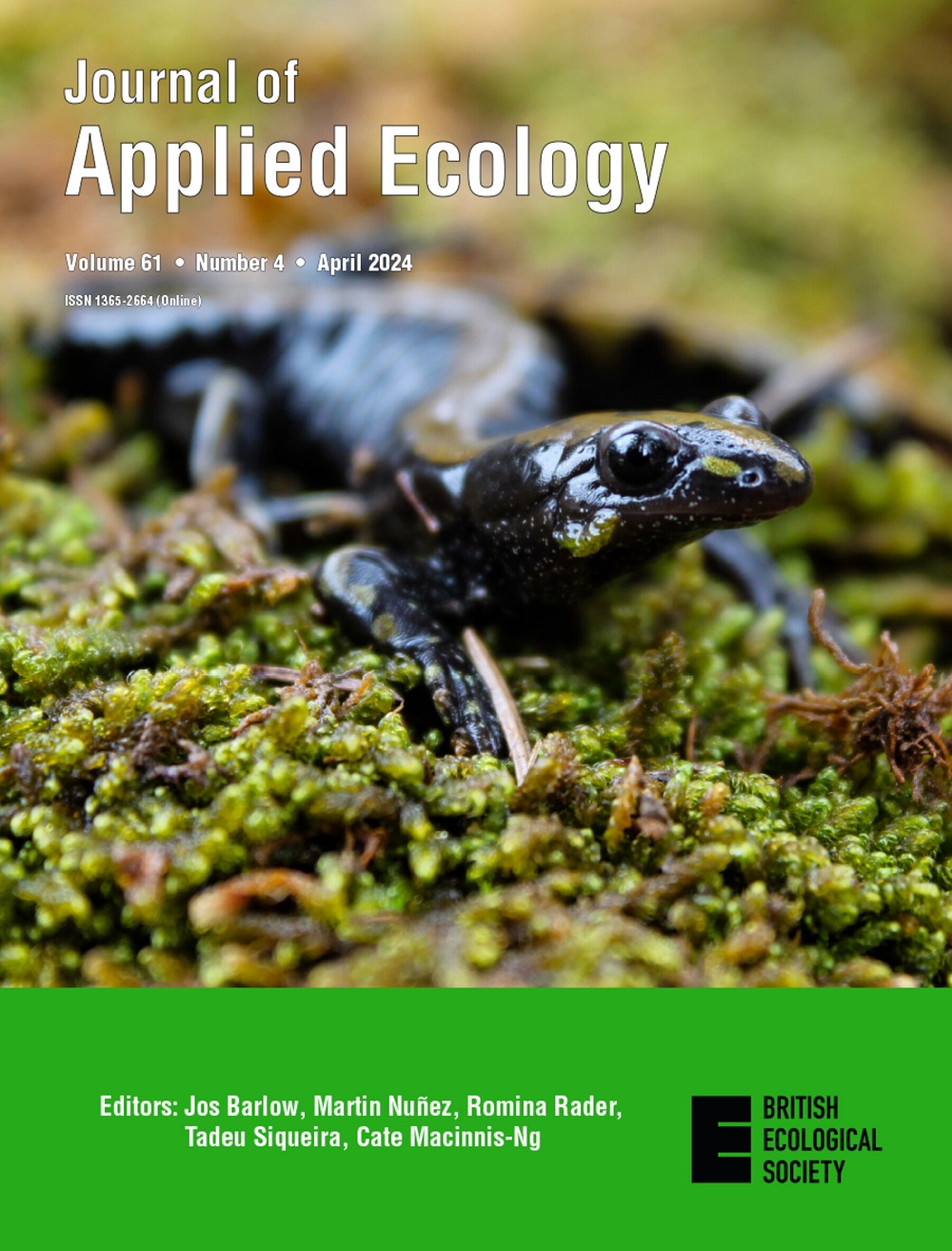求助PDF
{"title":"Light quality and spatial variability influences on seedling regeneration in Hawaiian lowland wet forests","authors":"Jodie R. Rosam, Laura Warman, Rebecca Ostertag, Ryan Perroy, Susan Cordell","doi":"10.1111/1365-2664.14775","DOIUrl":null,"url":null,"abstract":"<p>\n \n </p>","PeriodicalId":15016,"journal":{"name":"Journal of Applied Ecology","volume":"61 11","pages":"2638-2652"},"PeriodicalIF":4.8000,"publicationDate":"2024-09-09","publicationTypes":"Journal Article","fieldsOfStudy":null,"isOpenAccess":false,"openAccessPdf":"","citationCount":"0","resultStr":null,"platform":"Semanticscholar","paperid":null,"PeriodicalName":"Journal of Applied Ecology","FirstCategoryId":"93","ListUrlMain":"https://besjournals.onlinelibrary.wiley.com/doi/10.1111/1365-2664.14775","RegionNum":1,"RegionCategory":"环境科学与生态学","ArticlePicture":[],"TitleCN":null,"AbstractTextCN":null,"PMCID":null,"EPubDate":"","PubModel":"","JCR":"Q1","JCRName":"BIODIVERSITY CONSERVATION","Score":null,"Total":0}
引用次数: 0
引用
批量引用
夏威夷低地湿林中影响幼苗再生的光照质量和空间变化
热带森林林下植物往往光照有限。红-远红比(R:FR)是光照质量的一个有用而可靠的指标,其空间变化会影响本地和非本地幼苗之间的竞争。虽然一些夏威夷低地湿润森林(HLWF)的透光率已被量化,但还没有关于林下光照的空间分布如何随物种入侵而变化,或幼苗再生模式与光照是否有关联的信息。我们测量了林下光照的 R:FR 值,以评估三种 HLWF 森林类型的光照质量:原生植物主导型、部分入侵型和草莓番石榴主导型,从而量化林下(0-50 厘米高)的光照质量。我们还确定了光质与本地和非本地幼苗的存在、多样性和丰度之间的关系。这些数据可以帮助确定 HLWF 的恢复潜力。线性混合效应模型显示,以本地植物为主的森林的R:FR明显大于以P. cattleyanum为主的森林,这表明随着入侵的增加,光环境发生了变化。R:FR 的异质性在不同地点的差异比在不同森林类型之间的差异更大。在以原生植物为主的森林和部分入侵的森林中,低质量R:FR(0.0-0.40)类别中的原生幼苗较多,而中等(0.41-0.70)和高质量(≥0.71)光照类别中的原生幼苗较少。与部分被入侵的森林相比,以原生植物为主的森林具有更高的物种丰富度和原生幼苗的丰度,这可能是由于繁殖体的可用性。然而,幼苗的空间集群、本地幼苗与光环境的不匹配以及相当比例的开阔优质微地,都突出表明,从长远来看,HLWF中的本地物种的生长条件并不理想。综合与应用。尽管不同地点之间存在差异,但以本地物种为主和部分受入侵的森林仍具有保护价值。可针对不同的 R:FR 环境和不同的空间尺度增加幼苗,但 R:FR 与幼苗数量之间缺乏强有力的关系表明,在幼苗增殖或其他管理活动中应考虑光质以外的其他因素。
本文章由计算机程序翻译,如有差异,请以英文原文为准。


